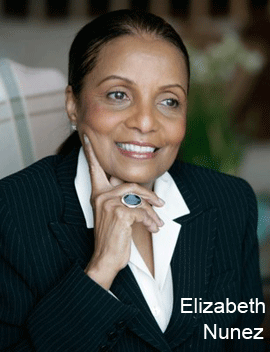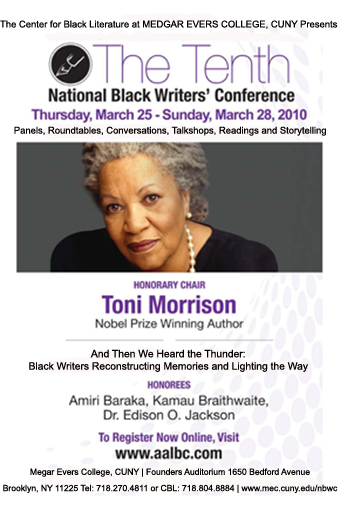REVIEWING
Anna In-Between
by Elizabeth Nunez
Akashic Books | $22.95 | pp 347
No (Wo)Man Is an Island
by Loretta H. Campbell

“We are the ones they could not break. We are the progeny of the ones they had to leave behind on the islands, the ones they could not tame for Georgia, the ones who refused to die.” --Anna In-Between
Anna the main character in this exemplary novel says this about her ancestors the West Indians, descendants of slaves, who have forged freedom and a new race in the Caribbean. Elizabeth Nunez, author of the superlative Bruised Hibiscus, sets this as one of many parallels in the book using rich and thoughtful imagery.
The first comparison is between the seemingly obedient Anna and her mother Beatrice. Anna, a 40ish- year-old editor for a prosperous publishing company in New York, ostensibly goes home to visit because she hasn’t seen her parents for some time. It soon becomes apparent that an ugly divorce from her adulterous African American husband and a need to bond with her mother are the real reasons for the trip.
Nunez gives us a Beatrice every inch the stereotypical West Indian woman. She is resourceful, always impeccably dressed, unaffectionate, and beautiful. “At seventy-one, Beatrice Sinclair is still as beautiful as the picture Anna has carried in her head from the first time she left home more than twenty years ago.”
However, Nunez digs deep into Beatrice and her motives. By all appearances, her marriage to Anna’s father, John, is solid. However, this union too has been tested by the infidelity of the husband. Almost twenty years into the marriage, Beatrice shamed her husband’s mistress into leaving him alone. She criticizes Anna for divorcing her husband simply because he was unfaithful.
A good wife, as Beatrice explains it, accepts the inability of men to be faithful. She is not a woman given to outward displays of affection, but she is quick to criticize.
She does not see that Anna needs her support. The two woman are drifting apart. Yet, the distance that Beatrice creates between them is soon narrowed by the biggest shock of both their lives. Beatrice shows Anna her bleeding, cystic breast.
“Nothing has prepared her for the lump pushing out beneath the skin on her mother’s left breast or for the thin trail of partially dried blood beneath.” Beatrice refuses to name what is destroying her breast. Inexplicably, she and her husband have never discussed it. Because Beatrice wears one of John’s shirts to bed every night and bloodies it, Anna cannot fathom how her parents are in denial about the illness.
Beatrice shunned her own mother when she was dying of breast cancer. A contradiction, her diseased breast rebuilds the dormant mother/daughter love between Anna and her.
Although Anna is astounded by the passivity of both her parents, she is most angry with her father for not taking Beatrice to the doctor. John seems obsessed with his wife’s modesty. Although he has seen the lump and the soiled clothing, he feels he must wait for his wife to talk to him about both. Nunez takes the opportunity to explain, in John’s voice, this kind of emotional reserve often attributed to many of her compatriots.
“Do you think they [African ancestors] would have lived to bear children and their children to bear other children if they didn’t have discipline, if they didn’t know how to control their emotions, to keep them in check? If they didn’t know how to take the lash, the iron bit in their mouths, and keep their pain bound and gagged, hidden from those who waited for their fall, their collusion in the slaver’s demonic intent to turn them into animals?”
This excuse indicates a misplaced sense of responsibility. This stolidity, Nunez outlines, was a heroic defense mechanism used by slaves in the Caribbean. Now, this silent endurance has become a life-threatening self-repression in their descendants.
What is also true is that Beatrice, a seemingly proud and courageous woman, is simply afraid of cancer or possibly terminal cancer. Worse, she cannot be treated on the beautiful island paradise that is her home. Their country doesn’t have a decent medical system. She will have to go to America, and this revelation brings about another obstacle.
That is the systemic racism in the American medical system. Nunez, who lives and teaches here in the States, is frank in her assessment. Anna tells her mother, “Racism affects the very lives of black people in America. …It affects where they live, what kind of education they get, what jobs are open to them, whether they go to jail or not. …It matters if you would be given the right treatment from doctors or hospitals…”
African American readers of this novel will identify with Beatrice’s growing fear of white American doctors.
Paradoxically, this makes her even more reluctant to get treatment and it makes her see how pernicious racism is in America. Before this, she had assumed that African Americans were exaggerating about its damaging effects.
Once again, Nunez has addressed an issue seldom talked about in the Black Diaspora. That issue is how West Indians view African Americans. To often, we’re seen as undeserving or irresponsible. In other words, the stereotypes about African Americans are believed by some West Indians too.
Having lived and been educated in America for decades, Anna knows these stereotypes are just that. Because she is able to see both sides of the cultural divide, part of her wants to return to America, the land of her education and career. However, the other part wants to remain in her native land with her family and roots.
Unfortunately, it is no longer the land of her childhood. Homicidal drug dealers torture and kill children and adults. Anna’s parents, and most families on the island, live and sleep behind a series of locked doors. There are few jobs, and most of Anna’s childhood friends have moved to other countries to find careers, spouses, and to build new lives. Of course, in America, these problems also exist. The exception being, most Americans do not leave the country for employment opportunities. They leave the small towns to pursue careers in the larger cities.
By the novel’s end, Anna has life-transforming choices to make on either side of this question. Still, she is forging an identity, which encompasses the best parts of both worlds.


